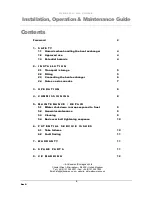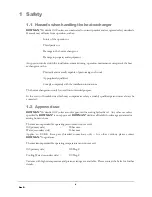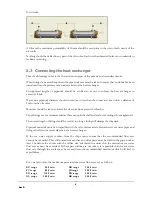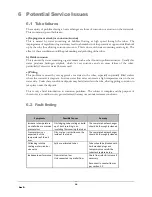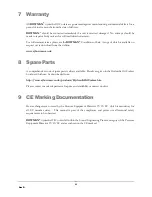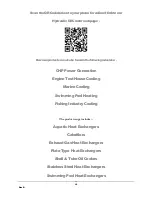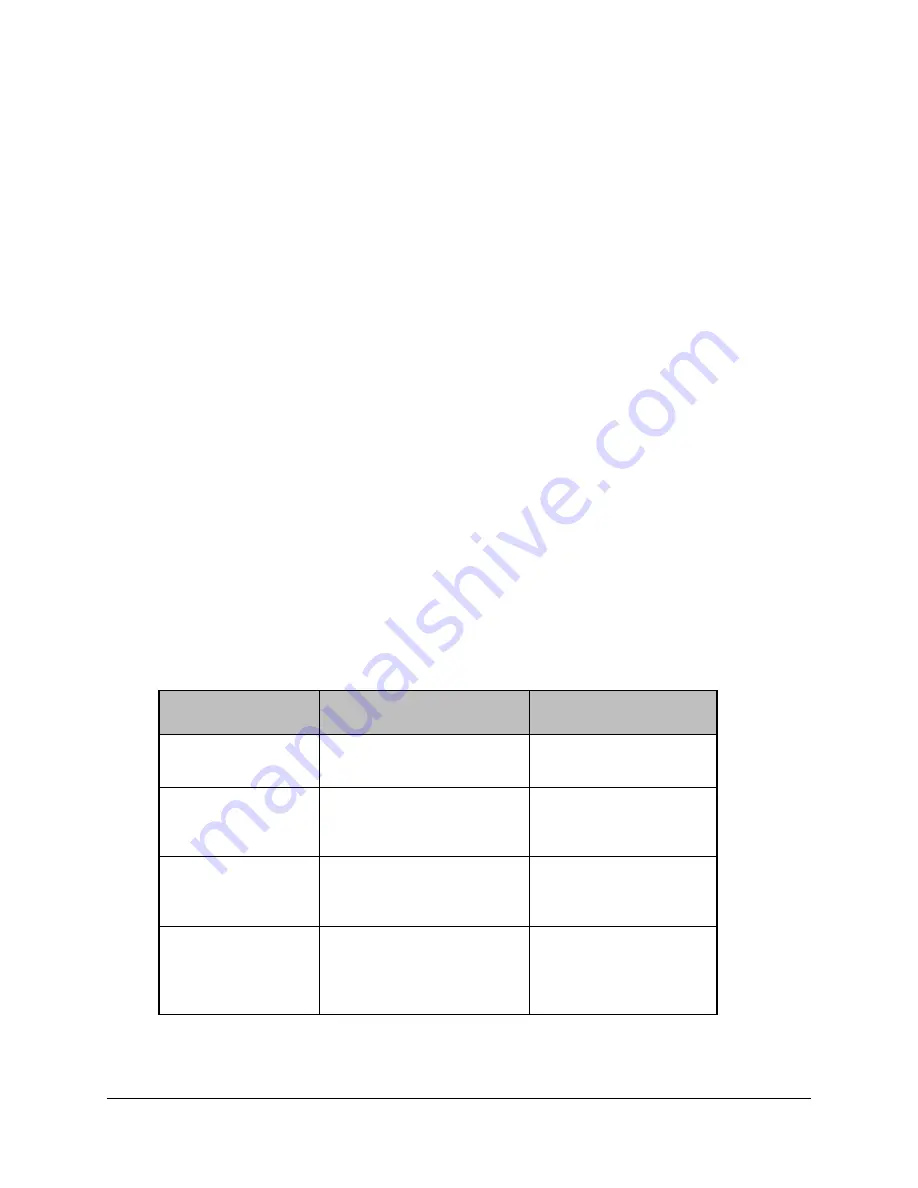
Rev D
10
6 Potential Service Issues
6.1 Tube failures
The majority of problems facing a heat exchanger are those of corrosion or erosion on the water side.
Three common types of failure are:
a) Impingement attack (or corrosion/erosion)
This is caused by water containing air bubbles flowing at high speed through the tubes. The
impingement of rapidly moving water may lead to a breakdown of the protective copper oxide film built
up by the tube thus allowing corrosion/erosion. This is worse with water containing sand or grit. The
effect of these conditions would be pockmarking and pinholing of the tubes.
b) Oxide corrosion
This is caused by water containing organic matter such as that found in polluted estuaries. Usually this
water produces hydrogen sulphide, which is very corrosive and can cause failure of the tubes,
particularly if excessive water flows are used
c) Pitting
This problem is caused by very aggressive sea water in the tubes, especially in partially filled coolers
where the sea water is stagnant. Low sea water flow rates can create a high temperature rise on the sea
water side. Under these conditions deposits may build or settle in the tube, allowing pitting corrosion to
take place under the deposits.
This is only a brief introduction to corrosion problems. The subject is complex and the purpose of
these notes is to outline in very general terms what may occur under extreme conditions.
6.2 Fault finding
Symptoms
Possible Causes
Remedy
Increase in temperature
on shell side or excessive
pressure loss
Oil sludging, tube scaling or build
up of both resulting in an
insulating film covering the tubes
The complete heat exchanger
should be thoroughly cleaned
Pressure loss is as
expected, but the
temperature of the oil
rises
Film, scale or restrictions on the
inside of the tubes
The complete heat exchanger
should be thoroughly cleaned
Oil leaking into the
cooling water circuit or
vice versa
Split or perforated tubes
Tubes should be blocked with
hard wooden plugs as a
temporary measure & the
tubestack replaced asap
Inadequate performance Flow rates too low
Unit connected in parallel flow
Check flow rates & increase if
necessary
Reconnect in counterflow as
per section 2.2



